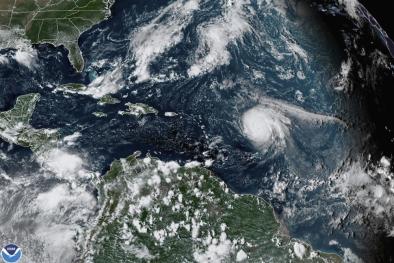A quantitative analysis of marine heatwaves in response to rising sea surface temperature
Study key findings & significance
- The progression of marine heat waves (MHWs) with rising SST are quantitatively analyzed using EEMD.
- Future MHWs under SST warming is projected based on their observational correlations.
- Approximately 15% of the ocean reach a permanent MHW state by 2100 under high emission scenario.
Abstract
It has been proven that marine heatwaves (MHWs) have increased in frequency, duration, and intensity over the past few decades, and this trend will accelerate further under continued global warming. While more intense and frequent MHWs are an expected consequence of rising sea surface temperatures (SSTs) under continued global warming, it remains unclear to what degree per Celsius warming trend of SSTs contributes to the changes in the MHW metrics. Here, we focus on how the MHW metrics evolve with the SST warming trend by using an adaptive data analysis method based on observational datasets covering the past four decades. We find that the globally averaged increasing rates of the annual MHW frequency, duration, and maximum intensity are approximately 3.7 events, 7.5 days, and 2.2° Celsius per degree Celsius of SST rise, respectively. The increasing rates for the annual MHW days and the fraction of the spatial extents to the global ocean affected by MHWs are approximately 58.8 days and 13.9 % per degree Celsius of SST rise, respectively. Based on these observational-based increasing rates and the projected SST warming from the selected Coupled Model Intercomparison Project Phase 6 (CMIP6) models, the spatial distributions of changes in annual MHW days, frequency, and cumulative intensity are projected to exhibit 2-fold, 4-fold, and 6 to 8-fold increases under the three socioeconomic pathways (i.e., SSP126, SSP245, and SSP585), respectively. The globally averaged annual MHW days will increase to approximately 224.2 ± 26.9 days, and the largest changes are projected to occur in the northeast Pacific, the North Atlantic, the south Indian Oceans, and parts of the Southern Ocean, with approximately 14.8 ± 5.7 % of the global ocean reaching a permanent MHW state by the end of the twenty-first century under SSP585.
Related Content




